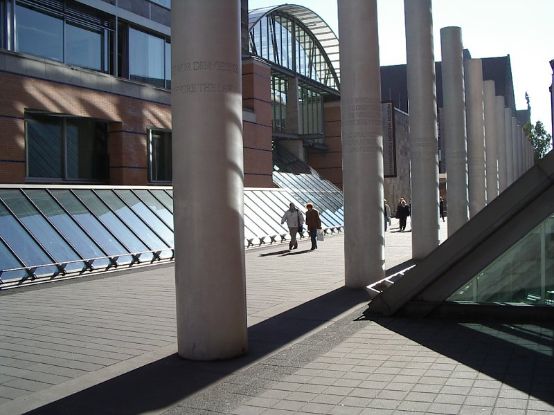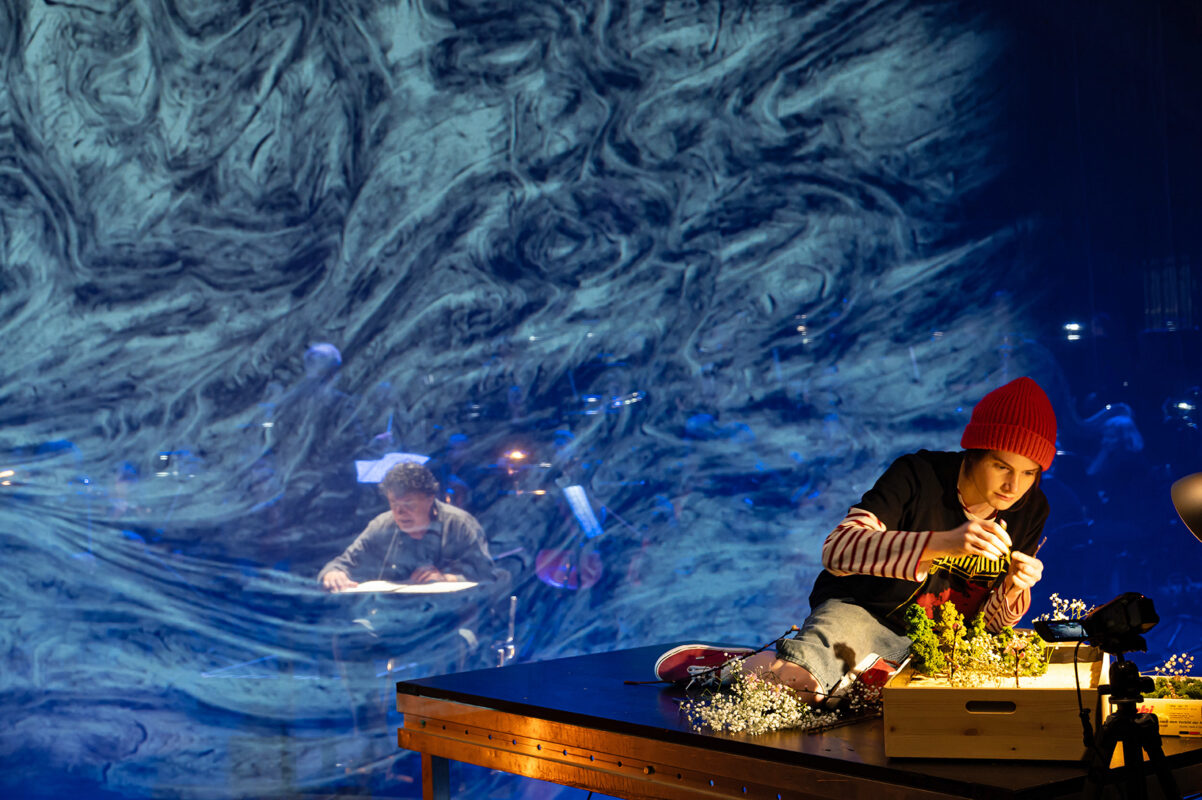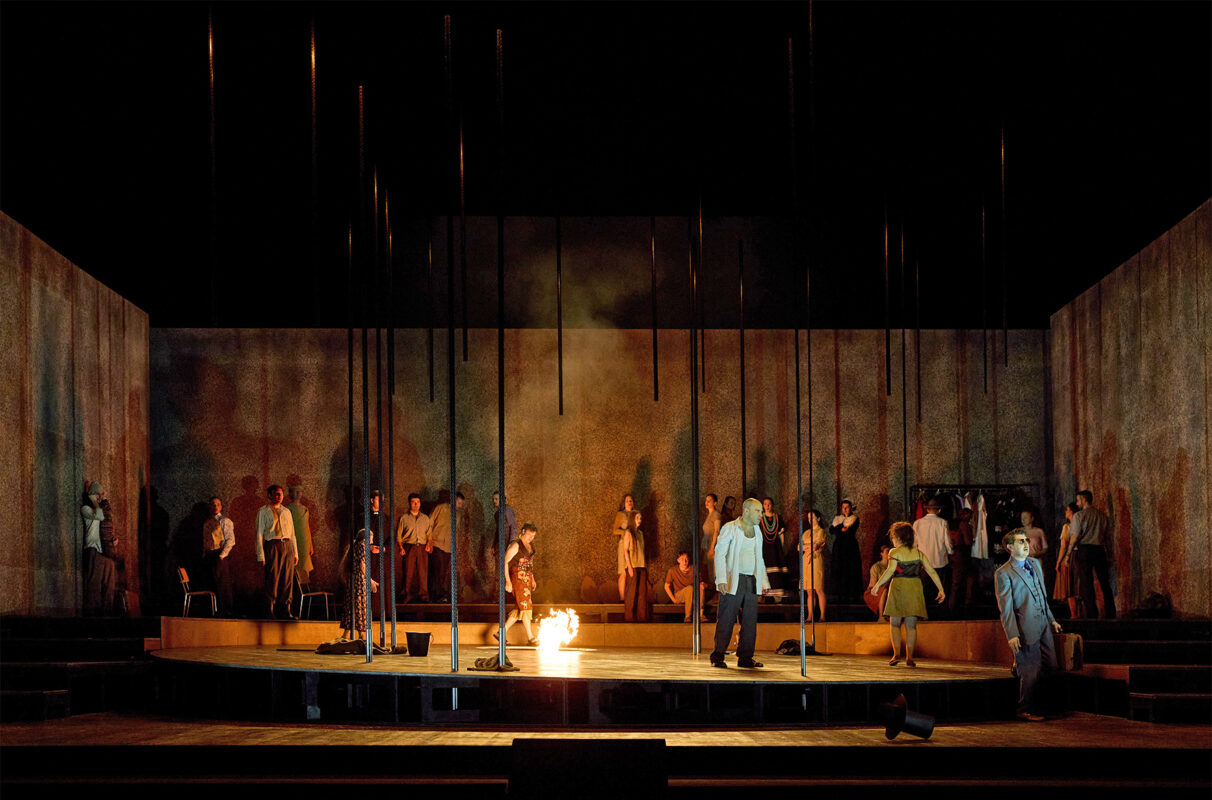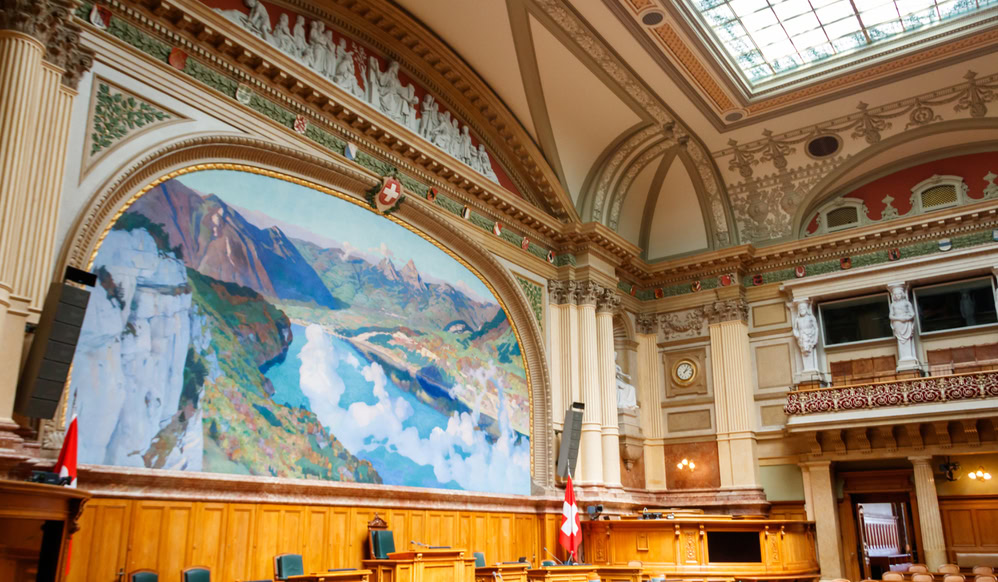Private Passion - Public Challenge
An international conference in Nuremberg dealt with issues relating to public and private collections of musical instruments. Martin Kirnbauer from Basel was among the many speakers.

Collections of musical instruments have a special status, as they are the only tangible objects of the immaterial art form of music alongside sound carriers and sheet music. The cultural-historical dimension of collecting musical instruments was the subject of the international conference Private Passion - Public Challenge. Collecting musical instruments in the past and presentwhich took place from May 9 to 11, 2017 at the Germanisches Nationalmuseum (GNM) in Nuremberg. It was initiated and organized by the staff of the project Collecting musical instruments - the example of the German Research Foundation. The conference focused on the one hand on the instrument as an object of cultural memory and on the other hand on the international comparison of private collections and their museums. A third complex discussed private collecting and its musealization, while a concluding section was dedicated to the special features of historical musical instruments in the context of provenance research.
In his introduction, FRANK P. BÄR (Nuremberg) highlighted the increasing challenges posed by the transition of a private collection into the public domain. Since the 1990s, research has not only focused on collection objects or collectors as subjects of investigation from a psychological, cultural anthropological or philosophical perspective, but the individual profile of formerly private collections also deserves increased attention from museums. Bär schematically summarized the essential differences between private and public collecting, whereby the profiles diverge considerably not only in terms of acquisition, preservation and presentation, but also with regard to responsibility in questions of administration, ownership, sustainability, documentation, provision and storage, not to mention financial possibilities and scientific expertise. This applies above all to increasingly urgent questions of provenance.
Private collection and museum - musical instruments as an object of cultural memory
The majority of the contributions addressed fundamental questions about the current handling of collections from the perspective of their own institution. The introductory cultural-historical reflections by DOMINIK VON ROTH (Nuremberg, The Rück Collection - a view of the whole), TIAGO DE OLIVEIRA PINTO (Weimar, Concepts and experiences of the Unesco Convention on "Music as Intangible Cultural Heritage") and MONIKA SCHMITZ-EMANS (Bochum, Music as an occasion for literary reflection and remembrance) provided the conceptual guideline for the discussion. With over 17,000 documents on acquisition, trade and restoration from the Rück Collection, von Roth highlighted the unique opportunity to rethink the phenomenon of the musical instrument collection in a museum context and to make the extensive network of a private collector and the individual objects digitally accessible not only to researchers but also to the public. For just as the documents form an essential part of the history of the instruments for the purposes of organological research and provenance, their role as representatives of cultural memory should not be underestimated. The collection strategies that can be read from the documents exemplify the cultural-historical field of tension between aesthetic ideas, empirical knowledge and economic conditions that musical instruments are able to represent.
The interrelationship between the immateriality of music and the materiality of musical instruments was also the focus of the following contributions. Pinto outlined the panorama of meanings attributed to musical instruments in the context of debates on cultural heritage. Beyond pure sound production, they function as carriers of a cross-generational transmission of knowledge and representatives of different music-cultural systems. Collecting and preserving thus takes on a global cultural-historical significance. Schmitz-Emans devoted herself to thinking about the symbolism of material objects on the basis of literary reflections. As an object of literature, the high cultural-symbolic significance of historical musical instruments becomes clear, whose immaterial patina points to the origins of music, indeed of culture in general (Carpentier, Los pasos perdidos, 1953), but also, in view of the horrors of the 20th century, even symbolizes the end of all culture (Grymes, Violins of Hope, 2014). However, the immaterial, which adheres to the material, requires constant narration. Although the immaterial, individual attributions have no guarantee of sustainability, musical instrument collections contain a cultural-performative quality in their individual logic, through which the past can become present.
An international comparison of private collections and their museums
These fundamental considerations were followed by individual and informative contributions on collection histories (FLORENCE GÉTREAU, Paris, Collecting musical instruments in France 1795-1995JOSEF FOCHT, Leipzig, The first generation of collectors at the Leipzig Musical Instrument MuseumBEATRIX DARMSTÄDTER, Vienna, Private collections in the public musical instrument museum). They reminded us that not only the inventory, but also the research and exhibition profile of public institutions is largely determined by the acquisition of private collections. In view of the heterogeneous appearance of many collections, it is not only the history of individual instruments, but also of the collections themselves that deserves to be conveyed. RENATO MEUCCI (Milan, Private and public collecting of musical instruments in Italy) used the example of Italy to illustrate that the ambitions of private collectors today with regard to the acquisition, but also the preservation and presentation of musical instruments are significantly higher than in public institutions. On the other hand, TIAGO DE OLIVEIRA PINTO (Collecting musical instruments beyond Europe - the Southeast Asian Musical Instruments Museum) Insights into an ambitious project in Bangkok, a museum without an existing collection, which will be brought together in the course of completion. Lively music-making determines the idea of an institution that will make the collection and preservation of musical diversity in the Southeast Asian cultural area accessible for research and teaching with a transnational perspective.
Two contributions by private collectors provided insights into the current motives and challenges of building and maintaining a collection (HEIKO HANSJOSTEN, Schweich/Heilbronn, The Hansjosten collection of historical keyboard instrumentsPETER THALHEIMER, Ilshofen, A private collection for concert use and as a source for music research). In addition to the playability of the instruments, the speakers illustrated a differentiated approach to their collection objects. Hansjosten took an economic look at his collection ("Clavieratelier im Barocken Küsterhaus", Föhren near Trier). Part of the tension between relatively high investments and personal satisfaction is the awareness of an uncertain future. At the same time, private owners benefit from greater flexibility on the market for historical musical instruments. The competitive situation among private collectors and the need for closer cooperation between private and public collections are also cited as acute problems. The initial impetus for Thalheimer's collection of recorders and flutes came from the need for "authentic" instruments for the reproduction of music, which could be made available for performance practice, organology and music research in equal measure through the collection. The production of copies is more than just a makeshift solution. Important questions of historical appropriateness are thus elegantly avoided, but not ignored.
Private collecting and musealization
The mutual influence of performance practice and instrument collections was also made clear in MARTIN KIRNBAUER's (Basel) insightful contribution (The "stylistically appropriate revival of old works of art" and the "instrument question". The Basel instrument collection between musical practice and museum). For the founder of the Schola Cantorum Basiliensis, Paul Sacher, "stylistically appropriate revival" was also a question of the instrument. The collection of old musical instruments he built up thus goes far beyond the mere display of historical objects and forms an integral prerequisite for historically informed performance practice.
KLAUS MARTIUS (Nuremberg, The Rück Collection from a restoration perspective) gave an insight into the past and current concerns regarding the restoration of the Rück Collection. An enormous effort was made by the Rücks in order to achieve a "historically faithful restoration". The collaboration with the Leipzig restorer Otto Marx and the Erlangen musicologist Rudolf Steglich, which lasted more than three decades, is a pioneering example of close cooperation between the private collection, restoration, research and museums.
The contributions by PANAGIOTIS POULOPOULOS (Munich, Musical instrument collections and new media: observations from a visitor survey at the Deutsches Museum) and GERDA RIDLER (Linz, Art as a role model - New paths for private collections) discussed possibilities for the museum presentation of collections from very different perspectives. Poulopoulos addressed the question of how permanent exhibitions could be improved. Using the Deutsches Museum's instrument collection as an example, the use of new media and interaction possibilities was evaluated by means of an audience survey. In addition to the play and visualization factor, this revealed an increased need for background knowledge. On the visual arts side, Ridler explored the question of why collectors of modern and contemporary art attract so much attention, even beyond the boundaries of the pure art public. The significantly higher media presence of fine art compared to collections of musical instruments is just one factor. In addition to pragmatic, personal and philanthropic reasons (prestige, life's work, desire to create), the motives of private art initiatives include a sense of responsibility towards the public, but also dissatisfaction with the cooperation with public museums.
Critical questions, but also suggestions, were raised in the museological and musicological contributions by PETER VAN MENSCH (Berlin, Private collecting as a challenge for the public sector), FRANZ KÖRNDLE (Augsburg, Private collections - museums with an expiry date?) and CHRISTINA LINSENMEYER (Helsinki, Trends and visions of private and public collections): In his critical outline, van Mensch addressed the many contradictions and problems, but also opportunities, in the relationship between museums and private collectors. Private collections also reflect the diversity of curatorial perspectives, which are determined by dynamic structures, so-called "liquid frames". In future, networks in the sense of a private-public "community of heirs" will increasingly have to take account of the idea of preservation. Körndle, on the other hand, discussed the consequences of invasive measures on instruments in terms of playability and the varying degrees of responsibility of private and public collections. So far, different financial frameworks have led to individual approaches to solutions. Despite the Cultural Protection Act (2016), there are still uncertainties regarding the preservation, presentation and documentation of musical instruments. The future of instruments that have suffered a major loss of their original substance as a result of being played also remains uncertain. Copies offer an alternative. In view of the coexistence of original and playable copy, the question of aura can also be renegotiated. Linsenmeyer summarized the diversity of individual ideas and visions of collecting and asked how to deal with historical diversity in today's exhibition business. Using sometimes drastic examples, she illustrated the acute problems of changing values and current tasks of private and public collecting. The presentation thus formed the starting point for the subsequent panel discussion, which was chaired by FRIEDEMANN HELLWIG (Hamburg).
Historical musical instruments and provenance research
One of the most important challenges currently facing public collections in particular is provenance research. The fundamental paper by UWE HARTMANN (Magdeburg, Provenance research: only a task for the state?) highlighted the ethical and moral principles in dealing with objects of all kinds that are collected, traded, museumized and presented. The negotiation of the boundaries of public and private responsibility is ultimately aimed at the question of where it should and can be jointly exercised. MARKUS ZEPF (Leipzig, Neupert, Rück, Gurlitt. Private and "semi-public" musical instrument collections between the wars) referred to the importance of academic collections using the examples of Freiburg i. Br. and Heidelberg. He also highlighted the diverse and important connections to Nuremberg and the network around the collectors Rück. In addition to the instruments themselves, acquired and traded accessories, iconographic and musicological literature provide information about the different profiles of competing collections. LINDA ESCHERICH (Nuremberg, Provenance research beyond looted art and restitution - the "Rück-Portal") presented the Back portal which aims to create a virtual representation of the extensive network surrounding the Rück Collection. For example, documents recording the offer, valuation and purchase of instruments make it possible to trace a historical price index. Through the Back portal it is therefore possible to obtain extensive information, for example on questions of attribution, provenance, the histories of individual instruments and their acquisition. MONIKA LÖSCHER (Vienna, Provenance research in the collection of old musical instruments at the Kunsthistorisches Museum Vienna [KHM]) explained the historical prerequisites for the establishment of the Commission for Provenance Research and for the adoption of the Art Restitution Act in Vienna. The systematic and proactive provenance research in the KHM's collection of old musical instruments provided an example of how the history of collections in and from the Nazi era can be dealt with.
CONNY RESTLE (Berlin) recently drew attention to the difficulties of certain provenances (The acquisition of the Wildhagen, Bitter and Paur collections by Alfred Berner between 1957 and 1962 for the Berlin Musical Instrument Museum). The Berlin example was used to explain the problematic situation with regard to acquisition and continued existence in post-war Berlin. Related to this is the question of whether and to what extent this specific situation could be integrated into the museum's existing presentation and research concept, especially against the background of an often unclear provenance.
All contributions to the conference highlighted the urgency of the topic and its methodical approach, both within and beyond public exhibition spaces. In this context, the Rück Collection and the GNM's associated project have a model status, not only by confronting the unpleasant, yet necessary questions, but also by addressing them with the Back portal actively working on their solution. The international orientation of the conference, which facilitated a fruitful dialog between musicologists, organologists, restorers and conservators, curators and private collectors, was an important way of creating new networks that are also sustainable. The suggestions emanating from the conference for a new museology of musical instrument collections, which can formulate consensual goals, form sustainable coalitions and present visions for the future, will not least help to inspire and convince politicians and cultural sponsors of the essentially self-evident topic of "music". An open access publication of the contributions for arthistoricum.net - ART-Books is already being planned.








